Ultimate No Sugar Diet Food List: Benefits, Tips, Meal plan and, More for Success
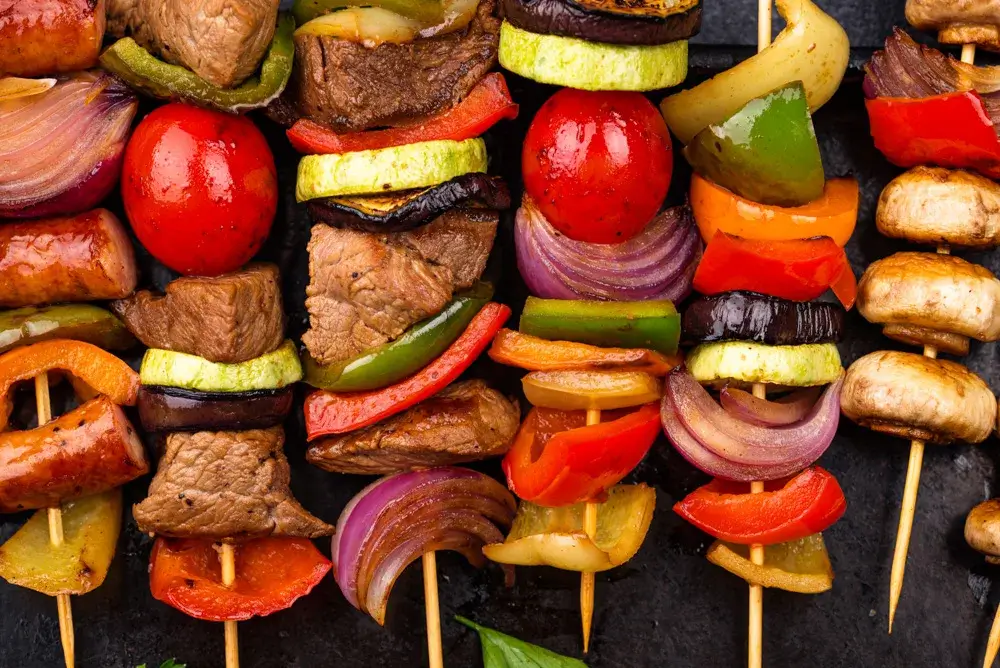
Are you eager to cut down on sugar, feel better, and be healthier? You’re indeed at the right spot.
The average American eats 17 teaspoons of added sugar daily.
You could be asking yourself ”Is sugar really bad for me?” This much sugar can cause obesity, diabetes, and heart disease.
A no-sugar diet greatly lowers these risks and helps you take charge of your well-being.
Giving up sugar might be tough, but with the right advice and know-how, you can do it.
Welcome to the ultimate guide on the no-sugar diet, including an extensive no sugar diet food list! This guide offers a detailed no-sugar diet food list and tips to help you succeed. Let’s explore the benefits of avoiding sugar, and find out how to stick to it.
So, are you ready to see what this diet can do for you?
Key Takeaways:
- Reducing your sugar intake can significantly improve your well-being and reduce your risk of chronic diseases.
- Start gradually and retrain your taste buds to adjust to lower sugar foods.
- Cut out obvious sources of sugar such as sugary sweets and processed foods.
- Read food labels carefully to identify hidden sources of sugar.
- Learn the sneaky aliases for sugar to avoid its consumption.
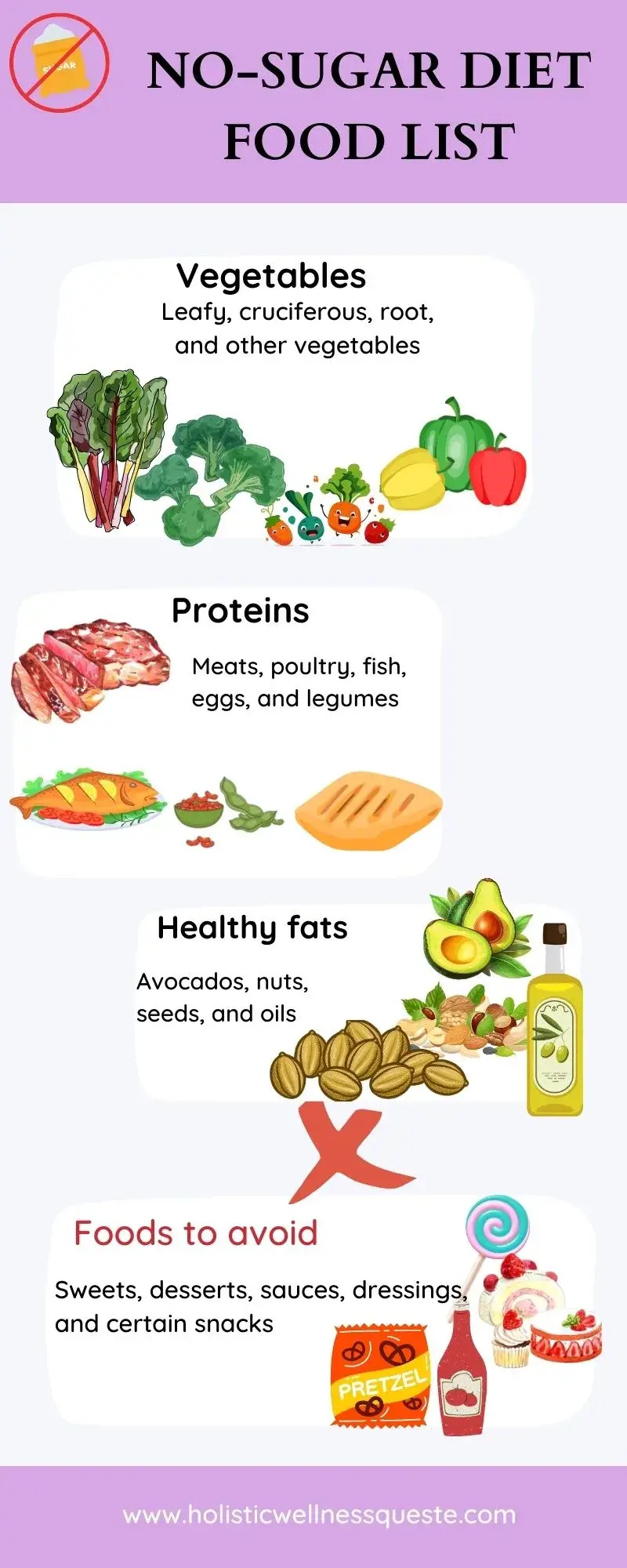
Understanding Sugar and Its Effects
What is Sugar?
Basically, sugar is a type of carbohydrate that gives your body energy. There are several types of sugar:
- Glucose and fructose are naturally found in fruits and vegetables.
- Sucrose, or table sugar, on the other hand, is what we commonly add to food and drinks.
Obviously, understanding these sugars helps you make smarter food choices.
Sources of Sugar in the Diet
Sugar is everywhere in our diets, not just in sweets.
It hides in many processed foods like sauces, breads, and even salad dressings.
Foods like these contribute to what we call “added sugars” because they are not naturally occurring in the food but are added during processing. When making a shopping list or meal plan, always check food labels for any added sugars.
Health Implications of High Sugar Consumption
Eating too much sugar can lead to serious health issues.
- It can cause weight gain and increase your risk of type 2 diabetes and heart disease.
- High sugar consumption can also lead to high blood sugar levels, affecting your overall energy levels.
- A diet high in sugar impacts not just your physical health but your mental well-being too.
Reducing your sugar intake by following a no-sugar diet food list can be beneficial. Indeed, it helps maintain normal blood sugar levels and can reduce risks associated with diabetes and heart disease.
Opting for a sugar-free diet involves choosing whole foods and unprocessed foods, which are naturally low in sugar. This shift not only helps you in cutting out sugar but also supports a healthier lifestyle overall.

What is a No-Sugar Diet?
Definition and Main Principles
A no-sugar diet focuses on eliminating all forms of added sugars and reducing intake of naturally high-sugar foods.
The main principle is simple. Avoid foods that contain added sugars. Opt for natural, whole foods instead. This means reading food labels carefully and choosing unprocessed foods as much as possible.
Difference Between No-Sugar and Low Sugar Diets
While both diets aim to reduce sugar intake, they differ in strictness. A no-sugar diet eliminates all added sugars and minimizes natural sugars, whereas a low-sugar diet simply reduces the amount of sugar you eat.
For example, a low-sugar diet might still include fruits and low amounts of sweeteners, but a no-sugar diet often tries to cut these out completely.
Benefits of Following a No-Sugar/ Lower Sugar Diet
Adopting a no-sugar diet can lead to several health benefits:
- Improved blood sugar levels: Reducing sugar helps keep your blood sugar levels stable, decreasing your risk of diabetes and improving your overall energy levels throughout the day.
- Weight management: Similarly, by cutting out sugar, you may reduce calorie intake and avoid weight gain, as high sugar consumption is often linked to obesity.
- Heart health: Moreover, lower intake of sugary foods can reduce the risk of heart disease, as excessive sugar can lead to high blood pressure and heart-related issues.
In short, following a no-sugar diet involves using a food list that highlights sugar-free foods and healthy substitutes, such as whole grains and healthy fats, instead of refined grains and sugary snacks. This approach not only helps reduce your sugar intake but also encourages a balanced diet full of nutritious food options.
By maintaining a meal plan from this no-sugar diet food list, you can enjoy meals that are not only healthy but also delicious and fulfilling, without the sugar spikes that come from eating high-sugar foods. This diet can significantly cut back on your added sugar intake and help you lead a healthier lifestyle.
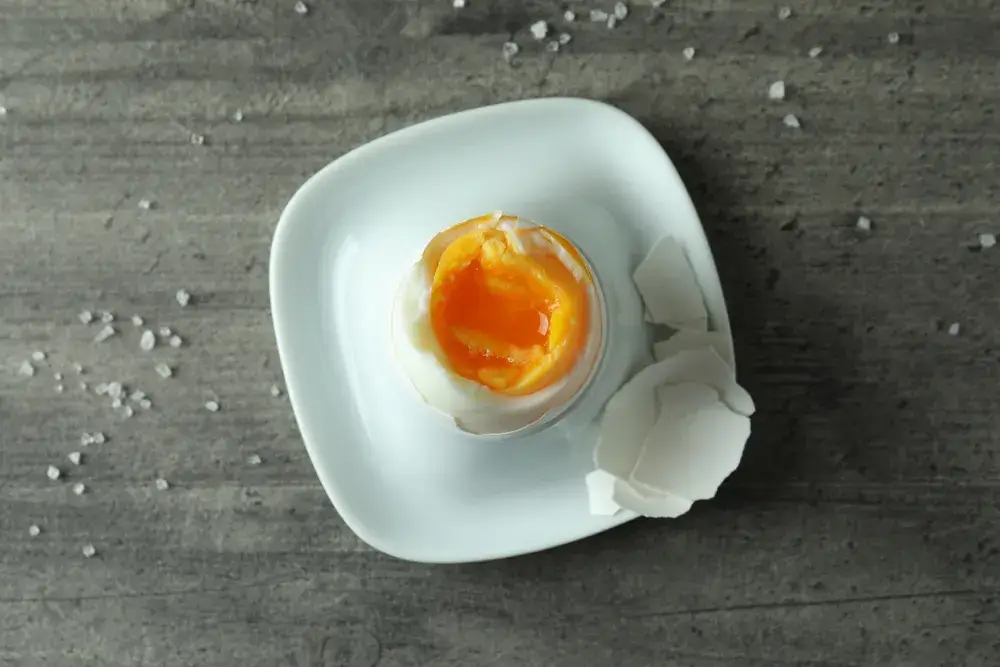
Detailed List of Foods to Eat and Avoid on a No-Sugar Diet
Comprehensive No-Sugar Diet Food List
When following a no-sugar diet, selecting the right foods is crucial for maintaining your health and achieving your goals.
Here’s a detailed list of foods you should include in your no-sugar diet plan. These foods are naturally low in sugar and rich in other essential nutrients.
Vegetables (Especially Non-Starchy Ones)
Vegetables are fundamental to any healthy diet, especially a no-sugar diet.
Here is a list of non-starchy vegetables to add to your no-sugar diet grocery/food list:
- Leafy Greens: Spinach, kale, swiss chard, arugula, and romaine lettuce.
- Cruciferous Vegetables: Broccoli, cauliflower, Brussels sprouts, and cabbage.
- Other Vegetables: Bell peppers, zucchini, cucumbers, asparagus, green beans, and mushrooms.
- Root Vegetables: Turnips, radishes, and beets (in moderation due to higher sugar content compared to other root vegetables).
These vegetables are versatile and can be eaten raw, steamed, roasted, or sautéed. They add volume to your meals without significantly increasing your sugar intake, helping you feel full and satisfied.
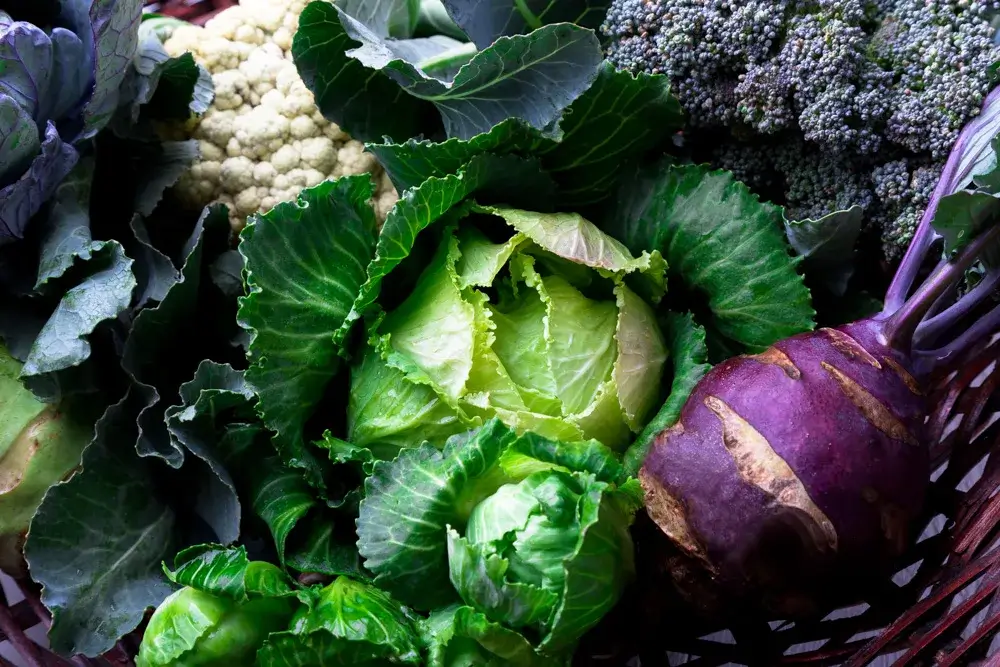
Proteins (Meats, Fish, Eggs, Legumes)
Protein is essential for building and repairing tissues, and it’s also great for satiety.
Here’s a detailed list of protein sources suitable for a no-sugar diet:
- Meats: Choose lean cuts of beef, pork, lamb, and venison. Opt for grass-fed or organic meats when possible to avoid added hormones and antibiotics.
- Poultry: Skinless chicken breasts, turkey breasts, and ground turkey. Again, look for organic or free-range options when possible.
- Fish: Salmon, trout, mackerel, sardines, and herring are excellent for their high omega-3 fatty acid content. Light canned tuna in water is also a good choice.
- Eggs: They are high protein source and highly versatile. Choose free-range eggs when possible.
- Legumes: Lentils, chickpeas, black beans, and kidney beans are great plant-based proteins. They are also rich in fiber, which helps manage blood sugar levels.
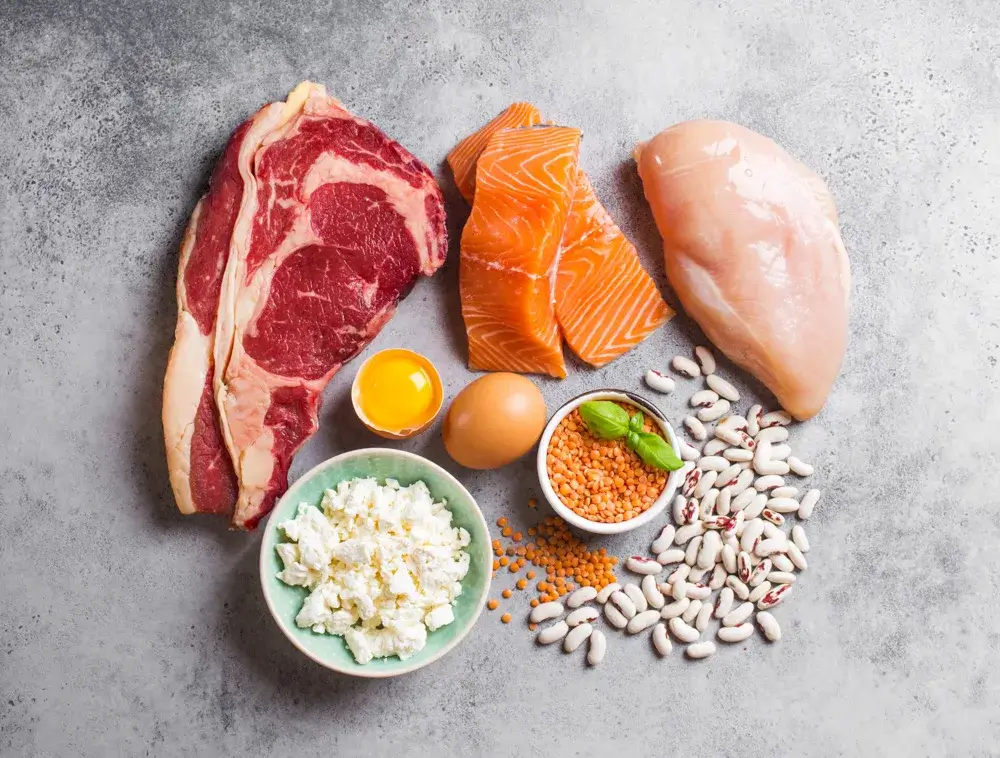
Healthy Fats (Avocados, Nuts, Seeds)
Healthy fats are vital for brain health and energy. They also help you feel fuller longer.
Here are some healthy fat sources to include in your no-sugar diet food list:
- Avocados: Basically, they are full of monounsaturated fats and perfect for salads or as a spread on sandwiches in place of mayonnaise.
- Nuts: Almonds, walnuts, pistachios, and macadamia nuts are good snack options. Just be sure to choose raw or dry-roasted varieties without added sugars or flavors.
- Seeds: Chia seeds, flaxseeds, pumpkin seeds, and sunflower seeds are great for adding to yogurt, salads, or smoothies.
- Oils: Olive oil, coconut oil, and avocado oil are good for cooking and making dressings.
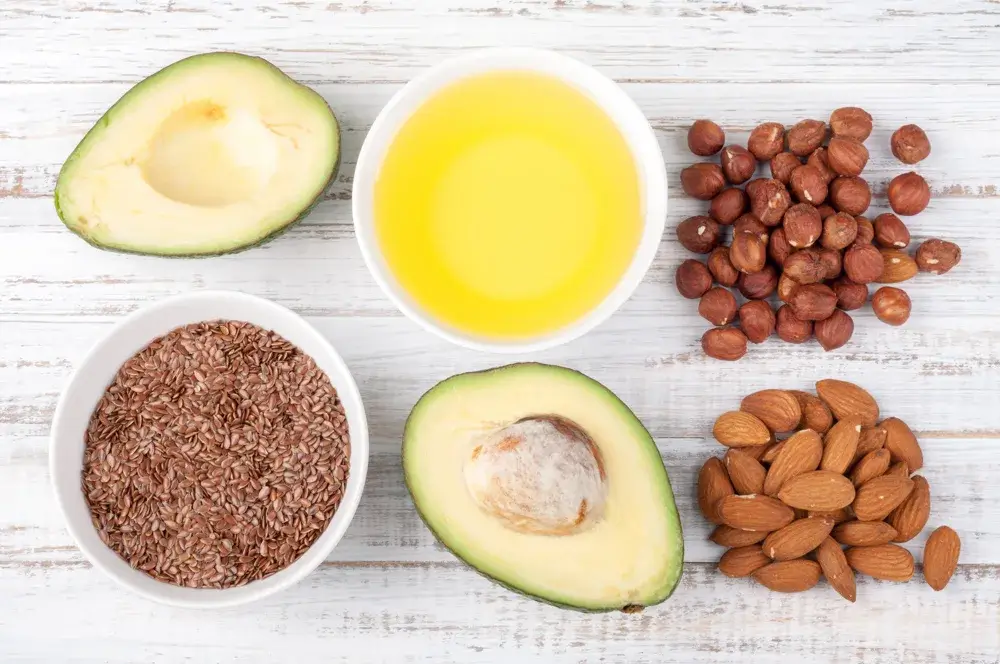
In summary, incorporating these foods into your daily meal plan can help ensure you’re eating a balanced, sugar-free diet that supports your health goals.
Remember, the key to a successful no-sugar diet is not just avoiding sugar but making sure every meal is balanced with vegetables, proteins, and healthy fats. This no-sugar diet food list is your starting point for a nutritious eating plan that minimizes sugar intake and maximizes health benefits.
Foods to Avoid
- Obvious Sugar Sources (Sweets, Desserts)
- Avoid sweets and desserts that are high in sugar. For example, cakes, cookies, ice cream, and candies. They contribute to high sugar intake and can disrupt your diet plan.
- Hidden Sugar Sources (Sauces, Dressings, Certain Snacks)
- Be wary of sauces, dressings, and snacks that might contain hidden sugars. Always read labels to ensure these items do not contain added sugars, which can sneak into your diet and increase your sugar consumption.
Tips for Reading Food Labels to Identify Sugar Content
- Look for Sugar: When checking food labels, look for terms like “sugar,” “syrup,” “nectar,” or any word ending in “-ose.” These are indicators of added sugars.
- Check the Ingredients List: Ingredients are listed in order of quantity, so if sugar is near the top, that product is likely high in sugar.
- Sugar-Free Labels: Products labeled “sugar-free” often use sugar substitutes. While these can help reduce sugar intake, it’s important to consume them in moderation.
- Understand Serving Sizes: Sometimes, the amount of sugar listed on a label might seem small, but it can be misleading if the serving size is tiny. Always relate the sugar content to the amount you will actually eat.
In short, when picking what to eat, check the nutrition facts closely. Note the total sugar and the added sugars separately. Remember, natural fruit and dairy sugars are not the same as those extra ones put in during making.
| Product | Hidden Sugars (per serving) |
|---|---|
| Baked Beans | 7g |
| Crackers | 2g |
| Tacos | 3g |
| Frozen Entrees | 5g |
In short, by using this no-sugar diet food list and understanding how to read food labels, you can effectively reduce your added sugar intake, manage your sugar cravings, and maintain a balanced diet. In fact, this approach is crucial for keeping your blood sugar levels normal and reducing risks associated with conditions like diabetes and heart disease.
Tips for Your No-Sugar Diet
Start Gradually and Retrain Your Taste Buds
- Starting a no-sugar diet should be a slow process. Don’t rush to cut all sugar immediately. Think of the first weeks as a step-by-step effort to decrease your sugar intake. This method makes it easier for your taste buds to adapt to less sweetness over time.
- Remember, not all sugars are bad. Fruits have natural sugars but also provide essential nutrients and fiber. So, you can keep enjoying fruits while lowering your overall sugar intake.
- To lessen sugar, make small changes in your daily habits. For instance, try having less sugar in drinks. Also, choose unsweetened drinks when you can. Replace flavored yogurt with the plain type to cut down on hidden sugars. For snacks, choose fresh berries over dried fruits because they have less sugar.
Here are some actionable steps to help you decrease your sugar intake:
- Use less sweetener in your hot beverages like coffee or tea.
- Switch to unflavored yogurt and add your own toppings like nuts or fresh fruits.
- Replace dried fruits with fresh berries for a naturally sweet and lower-sugar snack.
- Incorporate more vegetables into your meals to add variety and balance.
- Experiment with spices and herbs to enhance the flavor of your dishes without relying on added sugars.
By taking these small steps to cut down on sugar, you can shift to a no-sugar diet gradually. This makes it easier to stick with over time.
Learn the Code Names for Sugar
Another important tip is learning the code names for sugar. Indeed, sugar has many different names, and knowing these can help you cut it out. In fact, if you know its various names, you’ll spot and avoid hidden sugars more easily.
Here are sugar forms you should be cautious of:
1. Aliases Ending in “ose”
Words ending in “ose” mean it’s a type of sugar. For example, glucose, maltrose, sucrose, and fructose. Despite their innocent names, they are all sugars that can mess up your diet.
2. Molasses and Agave
Be wary of molasses and agave. Even though they are seen as natural, they are still full of sugar. Eating them in small amounts is best.
3. Syrups and Fruit Juice Concentrate
Corn syrup, rice syrup, malt syrup, and maple syrup are added to many processed foods for sweetness. Fruit juice concentrate sounds healthy but it’s a lot of sugar in one form. Read labels carefully for these sneaky sugars.
4. Maltodextrin
Maltodextrin is a sugar often hiding in plain sight. It’s a common food additive that thickens or fills processed foods.
In short, recognizing sugar’s various aliases and types helps you stay away from it. With this knowledge, you can make better diet choices and stay true to your sugar-free goals.

Avoid Artificial Sweeteners
Using artificial sweeteners instead of sugar might seem smart, but be careful. In fact, these can actually make you crave sugar more. They’re often in foods or drinks labeled as having no or low sugar.
Common examples to watch out for are:
- Stevia
- Splenda
- Equal
- Sweet ‘N Low
- Nutrasweet
These fake sugars give you sweet taste without the calories. But, studies show they can mess with your body. In fact, they might make you want to eat more sugar, which isn’t good.
Why Artificial Sweeteners Should Be Avoided
There are lots of reasons to avoid these sugars:
- They can make you want more sweets, making it tough to resist.
- Some research says they could be bad for your gut.
- Despite being low-calorie, they might even make you gain weight.
- They could mess with your blood sugar and insulin, not good for control.
If you need a sugar alternative, go for natural choices like honey or maple syrup. These are better for you than fake sugars. But, remember to use them moderately. They should be part of a balanced diet.
Watch What You Drink
Watching what you eat is crucial on a no-sugar diet. But, being mindful of drinks matters too. In fact, sugary drinks raise your sugar levels, making it harder to cut sugar from your diet.
- Sodas and fruit juices are packed with added sugars. They spike your blood sugar fast, causing you to crash later. Therefore, it is smarter to choose unsweetened drinks, infused water, or herbal tea over sugary options.
- Similarly, flavored coffee drinks, like mochas, can be full of sugar. They might taste great but they’re not healthy. Opt for black coffee or sugar-free options like Americanos.
- Additionally, be wary of the sugar in alcoholic drinks too. For instance, cocktails, sweet wines, and flavored spirits add sugars for taste. Even dry wines have grape sugar. Go for drinks with no added sugar, or low-sugar options like dry wine and light spirits.
Staying hydrated is crucial for your health, no matter your sugar intake. Water is always the best choice. But, if you want flavor, infuse water with fruits or herbs. Mint, lemon, or berries can make your water taste good without the sugar.
In short, making smart drink choices can help cut your sugar intake. By choosing wisely, you support your no-sugar diet. Remember, your beverages count toward managing sugar in your diet too.
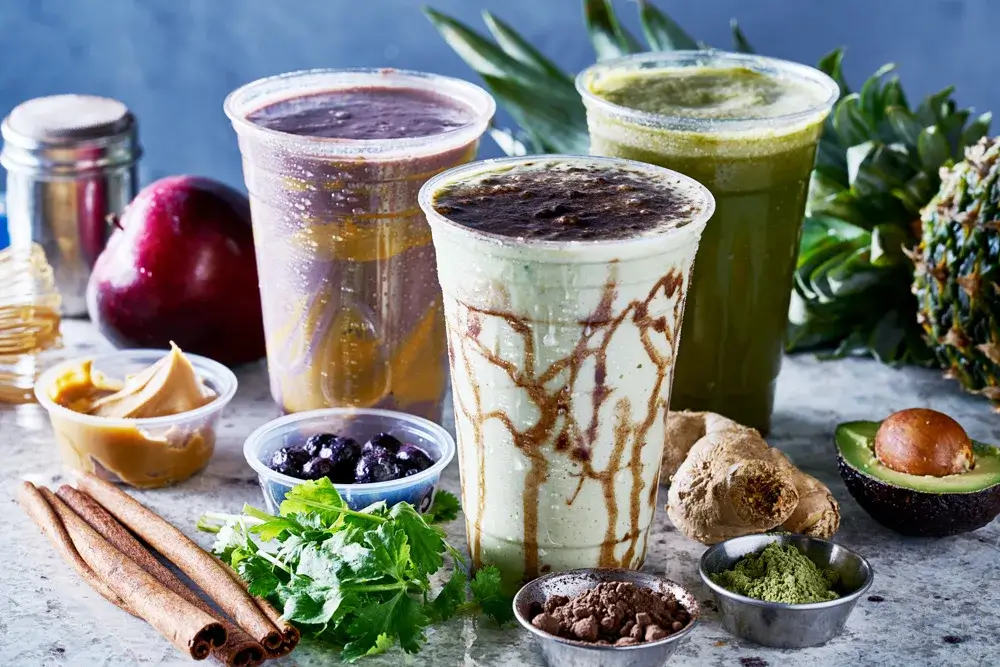
Add Flavor Without Adding Sugar
Don’t think taking sugar out of your diet means losing flavor. You can still have tasty meals without sugar. Just use a mix of spices, seasonings, and natural items. These not only boost taste but also help your health.
- Trying new spices is a great way not to use sugar. For your morning coffee or tea, try out cinnamon or nutmeg. They make your drink both tasty and healthier.
- Seasonings are another way to not add sugar but keep flavor high. Things like garlic powder or paprika can make dishes more interesting. So, say bye to sugar and hello to tasty meals.
- Don’t forget about fresh herbs too. Basil, cilantro, or parsley can really freshen up your food. Also, lemon or lime juice gives a nice, tangy twist to sauces or marinades.
Explore Flavor Options
Basically, be bold and try new things in the kitchen. Mix up different spices and herbs to find new favorite flavors. With salads, snacks, or heartier meals, there’s always a fun way to add taste without using sugar.
Using spices, seasonings, and fresh food can make your meals amazing. Enjoying a range of flavors means your body gets different nutrients.
So, have fun trying new tastes, and enjoy cooking without sugar.
Ensure Nutritional Balance with No-Sugar
On a no-sugar diet, getting your needed vitamins without fruit is key. Fruits are rich in vitamins but also have sugars. Swap fruits for colorful veggies to get your daily nutrients. This also helps with vitamins, minerals, and antioxidants for good health.
If you need extra help, a daily supplement can fill in the gaps. Supplements offer vitamins and minerals you might miss by cutting out certain foods.
And always talk to a doctor before adding new supplements to your routine.
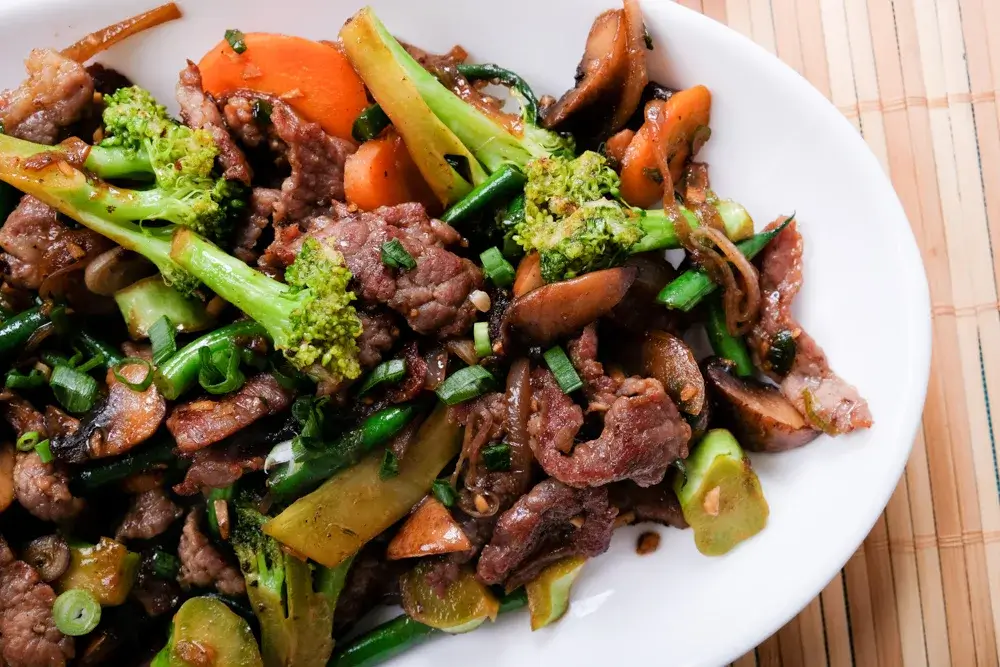
Meeting Your Vitamin and Mineral Needs
Vitamins and minerals do important jobs in the body. Eating nutrient-dense foods helps meet your needs. But sometimes, you might need a supplement. Here are key nutrients to remember:
| Vitamin | Role in the Body | Food Sources |
|---|---|---|
| Vitamin A | Supports vision, immune function, and cell growth | Sweet potatoes, carrots, leafy greens, bell peppers |
| Vitamin C | Boosts immune system, collagen production, and antioxidant activity | Citrus fruits, strawberries, broccoli, tomatoes |
| Vitamin D | Aids in calcium absorption and bone health | Fatty fish, fortified dairy or non-dairy milk, sunlight exposure |
| Calcium | Vital for bone health, nerve function, and muscle contractions | Dairy or non-dairy milk, cheese, leafy greens, tofu |
| Magnesium | Supports energy production, muscle function, and stress management | Leafy greens, nuts, seeds, whole grains |
Everyone’s nutritional needs are different. Listen to your body and get advice from a professional. They can help you find the right vitamins and minerals for your health.
Supplementing Your No Sugar Diet
While a well-planned no-sugar diet is generally nutritionally adequate, some people might need supplements to fill any gaps. Consider these supplements:
- Multivitamins: Ensure you’re getting a full range of nutrients, especially if your diet has become more restrictive.
- Omega-3 Fatty Acids: Important for heart health, especially if you don’t eat much fatty fish.
- Fiber: If you find it difficult to get enough fiber from your diet, a supplement might help with digestive health.
- Magnesium: This mineral helps manage blood sugar levels and is vital for muscle and nerve function.
Before starting any supplements, it’s a good idea to talk with a healthcare provider to make sure they’re appropriate for your specific needs.
Tips for Eating Out and Managing Social Situations
Eating out and social events can be challenging when you’re trying to cut back on sugar. Here are some tips:
- Choose the Right Places: Pick restaurants that offer whole food options and are accommodating to dietary requests.
- Check the Menu in Advance: Look at the menu online before you go to plan what to order.
- Ask for Modifications: Don’t hesitate to ask for dishes without sauces or dressings, which often contain sugar.
- Avoid Sugary Drinks: Stick to water, herbal teas, or unsweetened beverages.
- Communicate Your Needs: When attending social events, let your host know about your dietary restrictions. You can even offer to bring a dish that fits your diet.
How to Transition to a Sugar-free Diet
Transitioning to a no-sugar diet doesn’t have to be overwhelming. Start by slowly reducing your sugar intake. Here’s how:
- Understand Your Current Intake: First, identify how much sugar you currently consume by reading food labels and noting the sugar content.
- Make a List: Secondly, use a no-sugar diet food list when shopping. This list should include whole, unprocessed foods and sugar-free foods.
- Eliminate Obvious Sugars: Thirdly, cut out sweets, sugary drinks, and desserts from your diet.
- Look for Hidden Sugars: Remember, be cautious of added sugars in sauces, dressings, and packaged foods. Opt for options labeled as low sugar or sugar-free.
- Prepare Your Own Meals: Lastly, cooking at home can help you control what goes into your food. Use natural ingredients and avoid anything with added sugars.
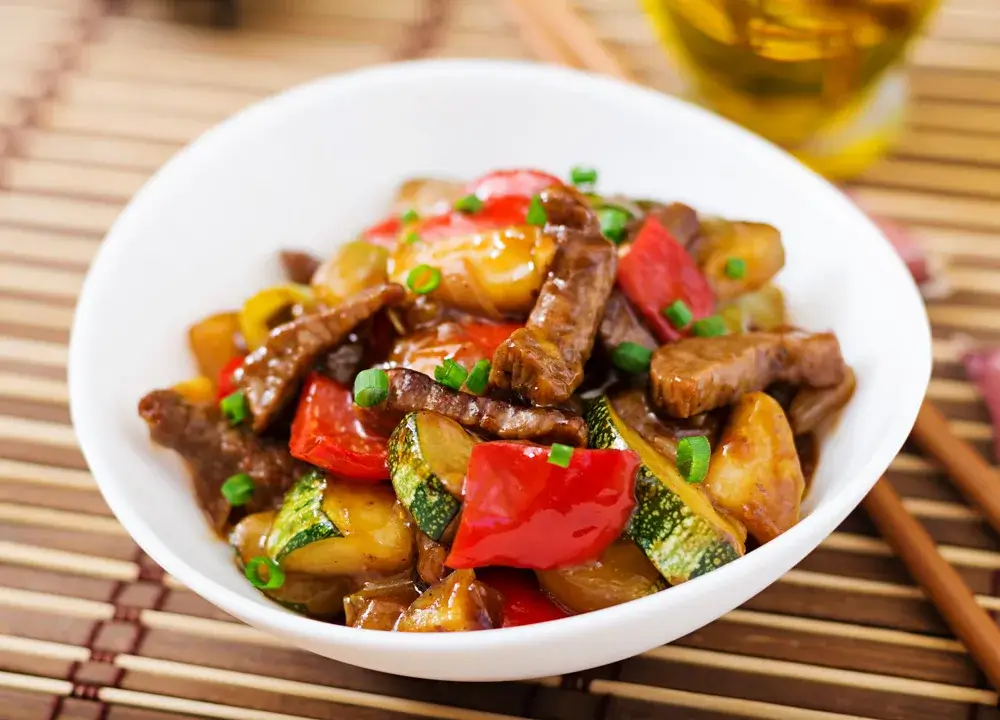
Sample Low Sugar Diet Meal Plan for One Week
Here’s a basic structure for a week-long meal plan on a no-sugar diet:
- Monday
- Breakfast: Greek yogurt with nuts and seeds
- Lunch: Grilled chicken salad with olive oil and lemon dressing
- Dinner: Baked salmon with steamed broccoli and quinoa
- Snacks: Carrot sticks and hummus
- Tuesday
- Breakfast: Omelet with spinach and mushrooms
- Lunch: Turkey breast wraps with avocado and sugar-free salsa
- Dinner: Beef stir-fry with mixed vegetables
- Wednesday
- Breakfast: Smoothie with almond milk, peanut butter, and frozen berries
- Lunch: Lentil soup with a side salad
- Dinner: Grilled shrimp with asparagus and a side of white rice
- Snacks: A handful of almonds
- Thursday
- Breakfast: Chia pudding made with coconut milk
- Lunch: Grilled chicken thighs with cauliflower rice
- Dinner: Pork chops with apple cider vinegar sauce and sautéed green beans
- Snacks: Celery sticks with almond butter
- Friday
- Breakfast: Scrambled eggs with salsa and avocado
- Lunch: Tuna salad with mixed greens
- Dinner: Zucchini noodles with pesto and cherry tomatoes
- Snacks: A hard-boiled egg
- Saturday
- Breakfast: Cottage cheese with flaxseeds and cucumber slices
- Lunch: Beef and vegetable kabobs
- Dinner: Cod with a parsley salad
- Snacks: Greek yogurt
- Sunday
- Breakfast: Protein pancakes made with almond flour
- Lunch: Chicken soup with lots of vegetables
- Dinner: Lamb roast with mint and roasted Brussels sprouts
- Snacks: An apple

Managing Cravings and Withdrawal
Common Symptoms of Sugar Withdrawal
When you cut back on sugar, your body might react in various ways. Common symptoms of sugar withdrawal include:
- Headaches: As your body adjusts to lower sugar intake, you might experience headaches.
- Mood Changes: Feeling irritable or moody is common when reducing sugar.
- Fatigue: You may feel tired as your body adapts to using other sources of energy.
- Cravings: A strong desire for sugary foods can occur, especially in the first few weeks.
Strategies to Handle Sugar Cravings
Dealing with sugar cravings is a crucial part of transitioning to a no-sugar diet. Here are some effective strategies:
- Eat Regularly: Have balanced meals and snacks at regular intervals to stabilize blood sugar levels and prevent extreme hunger.
- Choose Whole Foods: Snack on whole, unprocessed foods like nuts, seeds, and fruits which are naturally low in sugar.
- Stay Hydrated: Sometimes, thirst is mistaken for hunger or sugar cravings. Drink plenty of water throughout the day.
- Find Healthy Substitutes: Use sugar substitutes or sugar-free snacks when you really need something sweet.
- Get Support: Share your goals with friends or a support group. They can help you stay motivated.
Long-term Management of a No-Sugar Lifestyle
Maintaining a no-sugar diet long-term requires some planning and lifestyle changes:
- Keep Learning: Stay informed about which foods contain added sugars and read labels carefully.
- Adjust Your Environment: Remove sugary snacks from your home and stock up on healthier options.
- Be Prepared: Have a plan for social events and eating out, such as checking the menu beforehand or bringing your own sugar-free foods.
Conclusion
In conclusion, a no-sugar diet even for just 30 days can do wonders for your health.
It helps with weight loss and managing blood sugar. This can lower your risk of many health problems.
Additionally, not eating sugar can also cheer you up and make you feel better.
You’ll have more energy and feel lively.
Make sure to check food labels, plan your meals, and get support from others. These tips can help you do well in your no-sugar diet.
Remember, sugar is the modern-day tobacco. So, try to limit it as much as you can.
All the best as you take control of your food choices.
FAQ
How do I start a no-sugar diet?
Ease into a no-sugar diet by lowering sugar at first. Start by eating foods with natural sugars, such as fruits. They provide important nutrients. As you learn more, cut down on added sugars in your diet.
What foods should I avoid on a no-sugar diet food list?
Avoid obvious sugary treats like pastries and ice cream at first. Also, watch out for foods that seem healthy but are high in sugar. This includes dried fruits and some yogurts. By cutting these out, you’ll crave sugar less.
How can I identify hidden sources of sugar in food?
Always check food labels for hidden sugars. Foods like beans, crackers, and frozen meals can have a lot of sugar. Reading labels helps you cut out hidden sugars from your diet.
What are some code names for sugar that I should be aware of?
Be on the lookout for different names for sugar. Such names include glucose, fructose, and maltose. Don’t forget about syrups, fruit juice concentrate, and molasses. Knowing these names will help you avoid sugar better.
Can I use artificial sweeteners on a no-sugar diet?
Avoid artificial sweeteners on a no-sugar diet food list. This means staying away from stevia and Splenda. They might make you want real sugar more. It’s best not to use them.
What should I drink on a no-sugar diet?
Watch what you drink carefully. Steer clear of sugary beverages and even some wines. Try unsweetened drinks or water flavored with fruit. This helps cut down your sugar intake.
How can I add flavor to my no-sugar food without adding sugar?
Use spices and natural ingredients to make your food tasty. For example, add cinnamon to your coffee or use herbs to season dishes. This way, you can avoid sugar while still enjoying flavorful meals.
How do I ensure I’m getting enough nutrients on a no-sugar diet?
Without fruits, find other ways to get important nutrients. Colorful vegetables are a great replacement. They are full of various vitamins. This ensures you still get a balanced diet without sugar.
What are the benefits of a no-sugar diet?
A sugar-free diet can lead to weight loss and better blood sugar levels. It also lowers your risk of diseases, boosts your mood, and increases energy. These benefits make it worth reducing your sugar intake.